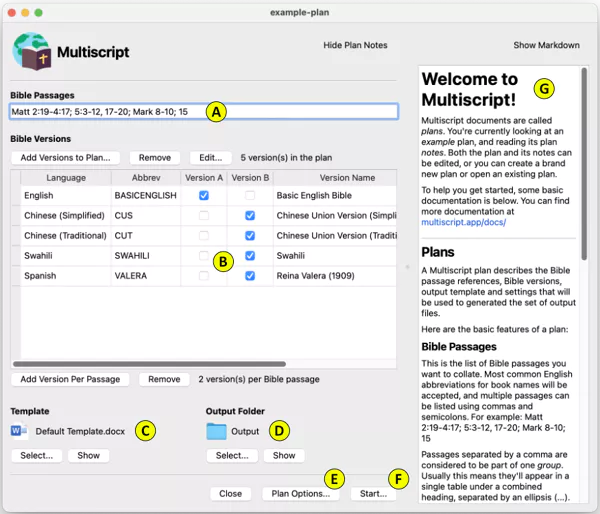Multiscript Documentation
Plan files
Multiscript documents are called plans. A Multiscript plan describes the Bible passage references, Bible versions, output template and settings that will be used to generated the set of output files.Here’s an example Multiscript plan:
 Here are the basic features of a plan:
Here are the basic features of a plan:
A - Bible Passages
This is the list of Bible passages you want to collate. Most common English abbreviations for book names will be accepted, and multiple passages can be listed using commas and semicolons. For example: Matt 2:19-4:17; 5:3-12, 17-20; Mark 8-10; 15Passages separated by a comma are considered to be part of one group . Usually this means they'll appear in a single table under a combined heading, separated by an ellipsis (...). Passages separated by a semicolon are considered to be in separate groups (i.e. separate tables). Semicolons also mean that any number that follows is considered to be a chapter number.
B - Bible Versions
This is the list of versions you wish to combine. Click Add Versions to Plan to add versions to the plan.The version columns (i.e. Version A, Version B etc.) control how the versions are combined. It’s easiest to think of each column in this list as a Bible passage column in your output document. You then tick which versions you want to appear in each column.
In the screenshot above, the English version is the only ticked version in column A, which means it will appear in every output document. All the other versions are ticked in column B. This will result in a series of files being generated, each of which have English and one of the other versions included per file.
You can have any number of columns (currently 1 to 26), and Multiscript will generate every possible combination for the versions and column ticks you enter.
You can double-click on any version to edit its labels, preferred font etc.